 I read a post in a writers’ group on Facebook recently that said that the author had done their “research” and come to the conclusion that there were just two approaches to marketing a book. Approach One was to plug your book relentlessly on social media. Approach Two was to make sure you get your keywords right, a good cover, a snappy title and a top notch blurb so that your book would show up in searches and sell that way. The person who made the post had decided he was going to put all his eggs in one basket and just pursue one of those approaches. I’ll not say which in case it influences you to do the same, which is not the objective of this blog. In fact, the objective is exactly the opposite.  Like this shape, Marketing is multifaceted. Like this shape, Marketing is multifaceted. I’m not going to say that either of those two approaches are wrong in themselves. What I will say is that narrowing things down to just one of two approaches is like saying there are only 2 ways to cook eggs (I can think of 6 without breaking sweat). Marketing, like any discipline, is multi-faceted. Tossing a coin and saying that only one option will be taken is like taking a binary view of any activity. It rules out more than it includes and what it rules out is valuable. Good marketing is analogue decision making, not binary. Using social media to plug a book is important to an Indie author. First of all, it is all some authors can afford because everyone can afford free. Secondly it raises the author’s profile, even if it is only amongst a limited size group of people. Finally, it can actually sell books if done the right way. But having the right keywords, cover, blurb etc is also essential. Keywords get the book found in searches. But they don’t sell the book. Once the book has been found, the cover attracts attention, the blurb increases the reader’s curiosity, and the sale is around 70% made.  But it is either the reviews or the free sample (sometimes both) that actually sells the book. Reviews because people will buy what other people have liked and the free sample because it allows the reader to decide if the book lives up to the expectations raised by the blurb and the cover. But that assumes that the book appears high enough up in the search results. There can be no doubt that Amazon ranks search results by popularity. At the top of Page 1 of the results is always the “sponsored” books, the ones that authors or publishers have paid to be there. Then you usually get the best-sellers in the genre because Amazon knows that they are money makers. The rest of the results can be spread over many pages and there is no way of knowing how far readers will go through the results before they buy their next read. Yes, your book will be there if you used the right keywords, but they may be on page 100. 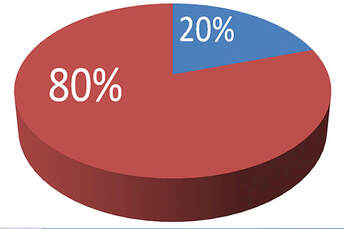 I suspect it’s going to be one of those 80:20 things. 80% of all books that will be purchased will appear on the first 2 or 3 pages of results and only the remaining 20% of sales will be made on subsequent pages of results, with the percentage declining the further you go through the pages. I have no evidence to support that, BTW, but intuitively it would seem to make sense. So, if you want to be in that 80% you have to do something else to make that happen. And that falls outside the second approach described above. To get your book into the 80% you have to find some way of marketing the book that doesn’t depend just on search results. You have to find a way of getting the reader to go looking for that book specifically, rather than doing a search. And that means finding a way of getting the reader to click on a link so that they go to exactly the right page for the book. 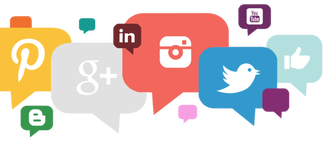 So, we’re back to social media. Yes and no. Social media is just one route that can be taken. We’ve already mentioned paid advertising as a way for readers to find a book the reader didn’t even know they wanted to buy. We use it and it pays for itself many times over. But for people who have a more limited budget that isn’t always a viable route to take (but check it out because it’s probably cheaper than you think). When you use social media and search results together, you start to harness the best of both worlds. It isn’t an either/or situation. It is a “both in the right place” situation. Then you can add in things such as email lists, promos, blogs and so much more.  I could list all the approaches that we at Selfishgenie Publishing use, but you would end up reading all day and you probably aren’t up for that. Scroll down to read the blog we posted a fortnight ago, because that says a bit more about what successful book marketing involves. Suffice to say – there is more than one way to skin a cat and using several ways, at the right time and in the right way, is always going to produce better results than just limiting yourself to one approach (apologies to animal lovers, but it’s just a saying. No animals were harmed in the writing of this blog). That is why marketing is such a time consuming activity for the Indie author and if you aren’t prepared to commit the time, you are always going to get disappointing levels of sales. One of the most frequent questions Indie authors ask about marketing their books is “Which is the best place to market my book?” The answer to that is so subjective that there simply is no answer. 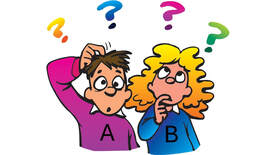 Just because Author A had huge success using Platform X, it doesn’t mean that Author B will have the same success if they also use it. This is why you have to know your readers, especially when it comes to using social media. For example, TikTok is used a lot by younger people. Now, don’t get the idea that it is only used by them, because older people use to too. But if you want to reach younger readers, then you are better off using TikTok than using, say, Facebook. Many women find X (formerly Twitter) too hostile for them, so if you want to reach a female audience you would be better off using Instagram or perhaps Pinterest, where more women tend to hang out. And that is why Author A may be having more success and why Author B won’t because their readership is different and therefore their readers’ social media habits are different.  There are even some readers who don’t use social media at all, or the internet for that matter (I know, weird, huh?) so reaching that group of people is going to be really hard, which is where book fairs and other real world forums fit into the equation. I’m not saying you have to be everywhere, all the time. You would have to be superhuman to do that. But you do have to think in terms of being in more than one place at any time. This is why real research is so important. You have to know where the majority of your target readership hangs out and when they hang out there, so that you can be in the same place at the same time. For example, there is little point in targeting YA audiences between 9 in the morning and 4 in the afternoon, because they will be in school or college. You have to target them in the evening. So, what would we like you to take away from this blog? 1. Book marketing is not a binary choice. It is multifaceted. 2. Taking multiple approaches to marketing covers more bases, which means it is likely that you will sell more books. 3. Know where (and when) to find your readers, so your readers can find you. If you have enjoyed this blog, or found it informative, then make sure you don’t miss future editions. Just click on the button below to sign up for our newsletter. We’ll even send you a free ebook for doing so.
0 Comments
 It is a sad fact that around 80% of people who start to write a book, never finish writing it. Why such a high dropout rate? It’s not easy to say as those that don’t finish don’t tend to talk about why they didn’t finish, but we can make a few assumptions which may not be too far off the mark. First there is the time factor. Writing a book is a very time consuming activity and when someone has competing priorities, such as work or family, something has to give and the thing that is easiest to abandon is writing. 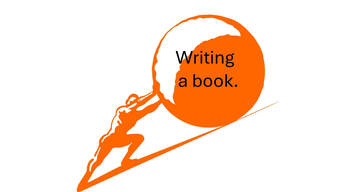 Secondly, some people don’t actually realise that writing a book is quite difficult. They assume that the words will simply flow from their brains to their keyboard of their own volition and in no time at all there will be a 90k manuscript that is all ready to go to the publishers. That is down to a lack of research, of course. Anyone who spends even the smallest amount of time on social media groups dedicated to writing would soon see the posts from frustrated writers and would realise that writing isn’t anything like as easy as it seems. Then comes the realisation that writing the book is only a fraction of the work that is involved in producing a book. Once it is written it has to be edited, market tested (beta readers), edited again, proofread and then the biggest mountain is still ahead: either finding an agent or going self-published. That is enough to put the less motivated off the idea of finishing their book. 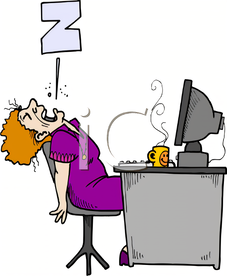 Which brings us to the biggest barrier of all for finishing the writing of a book: a lack of basic motivation. It is very easy to come up with an idea for a book. We can be inspired in all sorts of ways, including the “I’m pretty sure I could write a better book than this myself” we have all probably felt after reading a mediocre book. But the world is full of half-finished projects for which the explanation is that the person who started the project didn’t have enough motivation to finish it. Real writers are highly motivated. There can be no doubt about that. There are many reasons they are motivated, and we can take a look at some of them.  The most obvious is that they have a story to tell and writing it down is the best way of telling it, other than pinning someone in a corner and telling it to their face while they try to escape. I’m one of those sorts of writers. Once I have an idea for a story there is no way I can rest until it is written. Sometimes I’m halfway through writing one story when a second comes along and demands attention. It can be a real problem finishing the first story while the second one jumps around in my head trying to get my attention. I think that many real authors suffer from that problem, which is why they produce so many books at frequent intervals. They just can’t stop the stories from flooding out.  The second motivation is that people do it for money. If you are just starting out on your journey as an author, and the possibility of making a lot of money is what is motivating you, then brace yourself, because I have some bad news for you. 70% of all the books ever written never sell more than 100 copies. How motivated do you feel now? There are many reasons why they never sell more copies, and a lack of marketing is one of them, but it shows you what a tough industry you have chosen to enter. Of the remaining 30%, 70% of those will never sell more than 1,000 copies. To put that into context, you have to sell around 30,000 copies to make the equivalent of the “living wage” in the UK, which is about £20k p.a. at time of writing (about $25k or €23k). 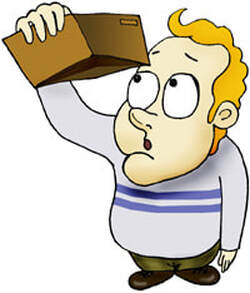 Only the smallest percentage of authors will ever make more than the living wage from writing books and the mega rich authors are the ones that get their books turned into movies or TV series. Yes – that could be you. But before you give up your day job, ask yourself what the probability is. The vast majority of authors are the equivalent to the Sunday-morning-in-the-park footballers comparing themselves to Lionel Messi (or Joe Burrow if you are American). 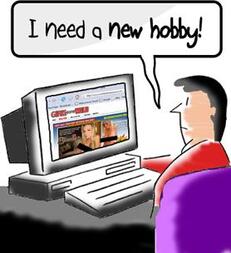 For many authors writing starts out as a hobby; something they like to do to pass the time. The thought of actually publishing a book often doesn’t cross their mind. It is something suggested by someone who has read their “scribblings” as they self-effacingly describe them. Those people tend to be some of the ones in the 70% who never sell more than 100 copies, because they don’t understand that the writing is the easy part. It is the marketing that sells books and that is the difficult part. Thos sorts of people would much rather just keep on with the writing part, so their books never sell. Which is a great pity because they might be potential best-sellers, but no one will ever know. 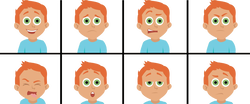 For some people writing is cathartic. Writing allows people to express their emotions, especially negative ones. Getting things down on the page is a form of release. It can also provide insights into why people feel the way they do, so it is good for their mental health. I have met many authors who have told me that this is why they write. Many of those sorts of books become best sellers, because the emotions expressed are so authentic. 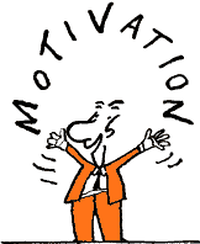 I have described just 4 examples of motivation for writing in this blog, one of which is actually built on a false premise. There are many more I am sure. Why not tell us what motivates you to write? Use the comments section below to share your story. So, if you are just starting out on your writing journey, ask yourself how you are going to keep yourself motivated for weeks, maybe months, on end while you work on your book. Then ask yourself how you are going to keep yourself motivated during the seemingly endless querying process. And, if the querying process doesn’t pay off and you end up self-publishing, ask yourself how you are going to keep yourself motivated while you market your book yourself. 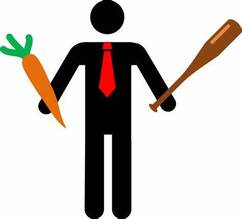 I’d love to be able to answer those questions for you, but in the writing world there is no boss or team to help you stay motivated. There is only you, the device you are writing on and, if you are lucky, a loved one who will keep you supplied with cups of tea and comforting words. But you aren’t really alone. There are thousands, possibly hundreds of thousands, of people in the world just like you. Join a writers’ group either in the real world or the virtual world, because they, too, can provide you with encouraging words. But it will still be down to you to do the rest and there is no one to motivate you to do it except you. If you happen to have some good motivational tips, please feel free to share them in the comments below. If you have enjoyed this blog, or found it informative, then make sure you don’t miss future editions. Just click on the button below to sign up for our newsletter. We’ll even send you a free ebook for doing so.  Books don’t sell themselves. They have to be marketed and learning how to market a book effectively can be time consuming. It can also be expensive, especially as there are so many sharks out there who would like to take your money but not give you very much in return. But you can kick start your marketing efforts by following our top 10 marketing tips for self-published authors. 1. Make time for marketing The one thing every successful indie author can tell you is that marketing takes up a lot of time. But the same authors will also tell you that if you don’t put enough time into marketing, you will never sell any books. Or at least, you won’t sell many. 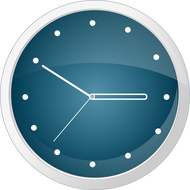 If your dream is to become a best-selling author, you also have to become a good book marketer. But marketing doesn’t stop when your book has started selling. If you stop marketing, the sales will stop too. This is pretty much a lifetime commitment. You need to spend a minimum of an hour a day marketing your books. That can be more than doubled in the early days or when you have a new book coming out. Yes, it’s a lot. There is no tip in this list that makes marketing any less time consuming. No indie author, even ones who are good at marketing, became an “overnight success”, so you also have to learn to be patient. 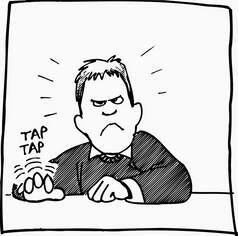 Patience isn’t just a virtue – it is an essential. That isn’t something people want to hear in today’s “instant gratification” world. But if you try marketing for a week, get no results and stop because you think it isn’t working – well it won’t work. It wasn’t the marketing that failed, it was the lack of patience that caused the failure. It is said in the marketing industry that buyers have to have 7 “touches” of a product before they buy it. A touch is any sort of exposure to the product and includes seeing marketing messages on-line It takes time for those 7 “touches” to happen. You could be lucky and get them within a few days, or it could take weeks, months or even years. But the more marketing you do, the more “touches” the readers will get and the quicker it will be for you to make sales. 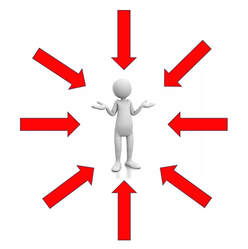 2. Use multiple approaches to marketing. Using one approach to marketing may bring you some results, but using several different approaches will produce even better results (which is why marketing is so time consuming). People respond to marketing in different ways. Some will respond to direct advertising, but others would rather die than click on an ad. Which is why you need to use multiple approaches to reach different people. By using all the different approaches listed below, in combination and at different times, you will tap into several of the different ways that people respond to marketing. We promoted this blog as the “top 10 tips”, but that doesn’t mean that there are only 10, so be prepared to research some of the ones we haven’t mentioned. Our past blogs are full of other approaches, and they can be found in our blog archive. 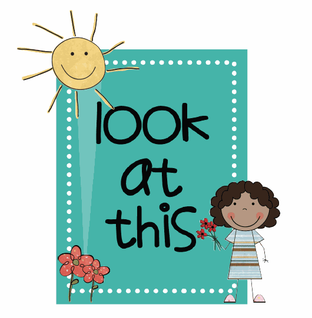 3. Cover The book cover is the first thing the reader sees and it does quite a lot of heavy lifting when it comes to marketing. It has to attract the reader’s attention at the same time as it tells them about the genre of the book. Spend some time looking at other authors’ book covers, especially the best sellers in your genre. What have they got in common? But most of all a book cover has to look professional – even if it was created by an amateur. If you can design your own covers using Canva or BookBrush (other graphics packages are available) and make them look professional, then that ‘s great. But if you can’t it is worth spending a little bit of money to get the right cover for your book. But beware. There are lots of “designers” out there and they don’t all do a good job. Also, the book covers they show on their profiles may not actually be their work. Seek recommendations from other authors, because they have trodden this path before and may be able to point you in the right direction. 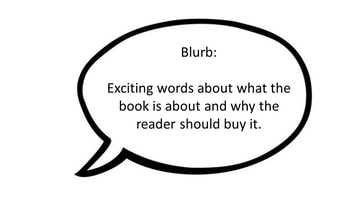 4. Blurb This is the other bit of marketing that does a lot of heavy lifting. So many books don’t sell because their blurbs are just snores-ville. Don’t try to describe your book in your blurb. You’ll never do it justice. Instead describe how exciting/entertaining/dramatic/thrilling/romantic/funny your book is. The first sentence has to hook the reader. It doesn’t matter how good sentences 2, 3 and 4 are. If the reader isn’t hooked by the time they get to the first full stop, those other sentences won’t even be read. We have covered blurb writing in previous blogs and there are lots of other blogs out there on the subject. READ THEM. 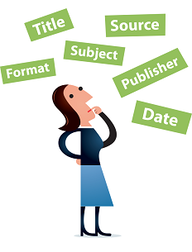 5. Metadata Meta data is all the stuff that you enter on the first page of whatever publishing platform you use for your book. Author name, title, subtitle, description, category (or categories), keywords etc. All this information is important because it is the way your book will be found when readers do searches for books to buy. Your metadata has to include words that will match up with their search terms. Pay particular attention to the category in which you place your book, because if you put your book in the wrong one, you may as well hide it at the back of a cupboard because it will never be found by the readers who read books like yours. On social media we see a lot of authors saying “you can’t fit my book into any category, it’s a cross between X, Y, Z and something new and original I created.”  This is wrong. Their book has a central theme, and that central theme is the category it belongs in. If ever there was a time to “pick a team”, this is it. One “team” will always be better for your book than the others and you have to work out which it is. Do some research! Do searches on etailing sites to find the categories that other authors in your genre are using. You will find the information in the “product description” section on Amazon. Who are the big-name authors in your genre? Take a look at the categories where their books are listed because that is probably where yours should be listed too. If you get your metadata wrong your book won’t show up in search results. If you get it right it will. Maybe not on the first page, or the second page or even the third but it will be in the results somewhere. The better the match between the search terms and the metadata, the higher it will be. When it comes to keywords, do more research. Don’t just try to guess them, try them out to see what sort of search results you get. Use incognito browsing so you don’t get offered your own books or books like the ones you have bought in the past. If you don’t get books like the one you’ve written, then the keywords aren’t the right ones to use for your book.  6. Social media presence The important thing about social media is that it is social! In years gone by, being on social media was a great place to promote your books for free. However, so many authors are now using it for that purpose that readers now tend to just scroll past book promotions. That doesn’t mean you don’t have to bother with social media. But it does mean that you should use it more to build relationships than you do for promotion. And we do mean real relationships, ones that involve conversations. Asking random questions in order to get lots of responses is not a relationship and it isn’t a conversation. Finally, don’t focus on attracting writers, focus on attracting readers. Yes, writers will support you and give you “likes”, but they aren’t the people you need to be talking to if you want to sell books. Readers, on the other hand, are always looking for new books to read. (yes, we know that writers also read books, but there are many more readers than there are writers). How do you identify readers? By starting conversations with people. We recommend Facebook, X and Pinterest. We don’t recommend Instagram, TikTok or similar. But we may be wrong so if you think you can make them work for you, then give them a whirl. 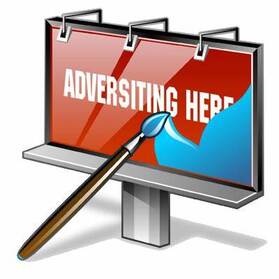 7. Advertise It pays to advertise, that’s why big corporations spend so much money on it. And it can pay back for indie authors too if they do it the right way. The wrong way is to pay on-line book promotion sites to blast out X or Facebook posts and to “feature” your books on their websites. The posts are ignored and the website entries get lost in the crowd. Use the outlets that have been proven to work for other authors. For us this is Amazon and Pinterest. Both platforms are used by people who want to buy something, so the battle is half won before you start. All you have to do after that is to learn to use them effectively. We have sold books using Facebook advertising, but Amazon Ads and Pinterest have both been more successful for us. I have provided some links to resources at the end of this blog. For Amazon, once you have seen their videos, I would recommend undertaking Bryan Cohen’s “5 Day Author Ads Challenge” where he teaches authors how to use Amazon’s algorithms to get better results for less money.  8. Your own website Having your own website isn’t for everyone and if you don’t think it is going to be your thing, that’s fine. However, if you do decide to get a website, or you have one already, it is useless if you can’t get people to go to it to look at your books. You need what are called “reader magnets”. There are two things you can put on your website to attract readers. One is complete short stories that can be downloaded for free. The second is free extracts of your books, with links embedded to take the reader to the complete book so they can buy it when they have finished the extract – assuming they liked the extract, of course. Blogs can be a reader magnet – if you are reading this it is because we drew you in with our magnet – but they take a lot of time to write, especially as you need to post new blogs regularly. If you are considering getting your own website, wait until you have at least 3 books published. The cost can’t be justified if you only have one book to sell. But remember, your website is like your book. Nobody is going to trip over it by accident. Use the other marketing tips in this blog to get people to visit your website or you may as well not bother having it. If you don’t want a website, at least have a Facebook page dedicated to you as an author. Keep it separate from your personal page and use it like you would a website. 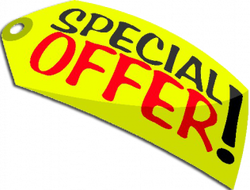 9. Price Promotions Price promotions are a great way to kick start sales of a new book, by reducing the price of a previous book. Putting your book on sale for a low price can attract sales, boost you up the sales rankings and get you reviews. However, they won't earn you much in the way of royalties, so you have to strike the right balance. Where price promotions really work is by reducing the price of an existing book and using it to promote the new book. Make sure that you include an extract of the new book in the reduced price book to entice people to buy it. This may mean having to change your ebook’s MS and re-publishing, but that doesn’t take too long. This tactic works very well if you put the new book on “pre-order”, which allows you to generate interest before the actual release date. Your pre-order sales all show up in the sales rankings on the day the new book launches, and they catapult you upwards. We do give away free books from time to time, but we don’t recommend it as a major marketing tool. Free books tend to be downloaded by people who only want a free book. They often don’t result in subsequent sales. Free books don’t feature in sales rankings, so they have no impact in those terms, though they may provide you with a few more reviews. It is better to discount the price of the book for a period. Amazon allows you to do this for 5 days at a time if your book is enrolled in KDP Select, but even if it isn’t, you can reduce the price on the book’s set-up pages on KDP as long as you don’t go below the minimum price that Amazon sets. Draft to Digital allows you to generate Smashwords coupons for discounts up to 100% and you can publicise these through your social media. But special offers are only special if they are for a limited time. Keeping books listed at a discounted price for a long period reduces the impact they have.  10. Learn how to market effectively. We should probably have made this the No 1 tip, but if we’d done that you wouldn’t have read the rest of the blog. There is no substitute for learning the skills necessary to do any job. Exactly the same applies to learning how to market your books. The biggest selling indie authors aren’t the ones who have published the best books. They are the authors who have learnt how to become good at marketing. You can write a mediocre book (we've read some of them) and still become a best-selling author by learning how to market. You can also write the best book ever written and it will never sell because you didn’t learn to do your own marketing. Your book, your rules. All we can say is that we sell books because we market relentlessly, and we are always trying to learn new marketing skills. We have included a link below to direct you to a website where you can get some training for free to get you started. 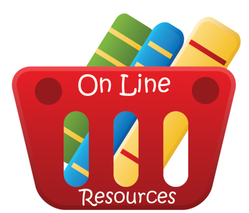 Resources One blog won’t make you a marketing expert, so here we list some resources you can tap into to help you with your marketing. Marketing training. FutureLearn offers free training wherever you are in the world. Search their site for a wide range of marketing courses. You can complete one in a day if you put your mind to it. Using Pinterest for marketing: Beginners use this link, more advanced users should use this link to find out how to use it for business (and selling your book is a business) Amazon advertising: watch their videos to learn how to use their ads platform. To learn to use Amazon Ads more cheaply and effectively, try Bryan Cohen’s 5 Day Author Ads Challenge. This is the Facebook page to find out when the next challenge starts. They usually run once every 3 to 4 months. 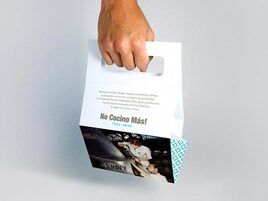 What to take away from this blog There are two key messages that we hope you will take away from this blog: 1. Marketing is the only way an indie author can ever sell more than a handful of copies of their books. 2. Learning how to market is the only way to make marketing work for you. If you have enjoyed this blog, or found it informative, then make sure you don’t miss future editions. Just click on the button below to sign up for our newsletter. We’ll even send you a free ebook for doing so. 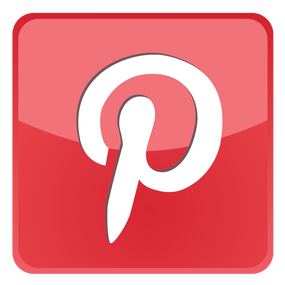 87% of Pinterest users have bought a product because they saw it on Pinterest. Has that grabbed your Attention? It should, because that is 87% of around 300 million monthly users. We here at Selfishgenie Publishing had heard of Pinterest, of course, but we hadn’t paid it much attention. It didn’t seem to have a place in our marketing strategy, as far as we could see. We regarded it as a poor relation of the social media world and therefore not able to do much for us. Then we watched a video that changed our minds. The video was made by a well-known self-published and mainstream published author, Melissa Bourbon, who also provides a wide range of training for writers. She also does a lot of her own marketing and is a big user of Pinterest. In the video she showed us what Pinterest had done for her and we were sufficiently impressed to give it a try for ourselves. So, we gave it a try and it worked for us too, which is why we are now suggesting it for you. What follows is a bit about how Pinterest can be used for marketing, along with some hints and tips we’ve picked up along the way that will help new users to make an impact with it. Let’s continue with a few more significant statistics.  47% of Pinterest users go on the site specifically to shop. So, if you want to find buyers, Pinterest seems to be the place. 50% of Pinterest users are outside of the USA. So, wherever you are in the world, you have a Pinterest audience waiting for you. Finally, just to whet your appetite a little more, Pinterest users are more likely than other social media users to click-through, share or use your content. First of all, what is Pinterest? We thought it was just another social media platform. We were wrong.  Social media posts are here today, gone tomorrow things. Every time you make a post, older posts get pushed further and further down your profile page. That means you have to keep refreshing your messages with new posts. With Pinterest you don’t have to. Pinterest “pins”, as they are called, show up in search results according to relevance, not currency. So a pin made 5 years ago can show up alongside a pin made today. Pinterest is really a very powerful search engine. But unlike other search engines, it only searches within its own site. When users log into Pinterest they are usually looking for something and Pinterest helps them to find it. One of the popular searches is for recipes, for example. Readers enter a few ingredients or other suitable search terms (dinner recipes, summer recipes, etc) into the search bar and Pinterest will show them all the pins related to those search terms. But not only do your pins show up on Pinterest searches but, if you set them up correctly (I’ll return to that later in the blog) they’ll also show up on Google searches. Two for the price of one. Actually, two for the price of none because you don’t have to pay Pinterest anything, unless you want to use their advertising tools.  And the same applies to books. Some readers go to Pinterest to find ideas for new books to read. If you have a website, Pinterest can give you immediate impact. Google takes a long time to find new websites and show them in their results, no matter what SEO “gurus” might tell you. They can take weeks, months or even years to make it to the first or second pages of search results. But pins on Pinterest show up the day they are posted. All users have the latest pins displayed on their home feed, before they even start searching. And the pins they are shown are those relevant to the sorts of things they have saved before. So, if they have saved pins related to books, they’ll see new pins related to books – your pins. Why do buyers like Pinterest and not Amazon or one of the other book etailing sites? Probably because there is no pressure to buy. They are just browsing, looking for ideas or suggestions. 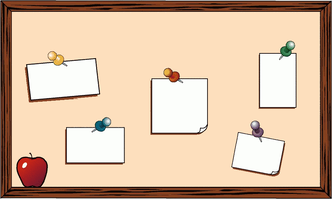 If the reader finds something they like the look of, they can click on the pin to find out more, but if they aren’t interested they can just go onto the next pin that takes their fancy. Unlike other social media sites, Pinterest actually encourages users to click on links, by including those links in prominent positions on the details page of the pin. And this is why it is a marketing tool for indie authors. Now, I’m not claiming that Pinterest is going to turn a book into a bestseller overnight. Nor would Melissa Bourbon make that claim. This is just one more string to the indie author’s marketing bow and should be viewed in the same light. But it’s probably a more powerful marketing tool than either Facebook or Twitter/X. We started using Pinterest back in November, when we were setting up our social media marketing for the Christmas season. It’s a big time for book sales and we wanted some of that action. The timing of our “discovery” of Pinterest couldn’t have been better. 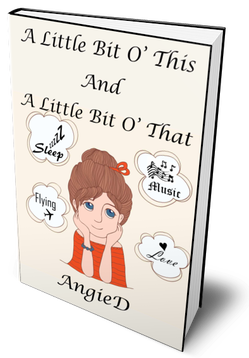 We have two books which we think are especially suitable for Christmas and we put up several pins relating to them. And we got sales. What is particularly significant is that for one of the books, sales had been pretty poor over the first 10 months of the year, but as soon as we put it on Pinterest, that changed. Coincidence? You know we don’t believe in those. Besides, Pinterest’s tracking data showed us how many views and clicks we got for the pins, so we can be pretty sure that the sales came via Pinterest and not just from random searches on Amazon. I’ll be frank, there is some work needed to get the best out of Pinterest, just as there is for any other marketing channel. Experts suggest you have to make around 10 pins a day. Well, we haven’t got time for that so we’re not going to make the same suggestion. But using it regularly is going to have better results than using it sporadically. 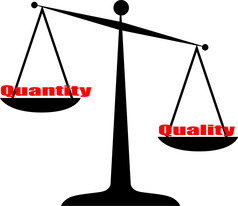 In one of the videos we link to later in the blog, the presenter suggests that you can get great returns not by pinning quantity, but by pinning quality. She claims that over 50% of the traffic that is driven to her website by Pinterest comes from just 3 pins, which she made a while ago. But they are “quality” in terms of what makes a good pin, which is why they keep on working for her in the long long term. We’re not going to take you line by line through how to set up a Pinterest pin or how to create a good quality pin. Instead, we went on YouTube and found a video that does that. We provide a link to it at the end of the blog. But we have learnt a few tricks, and we’d like to offer you a few tips. 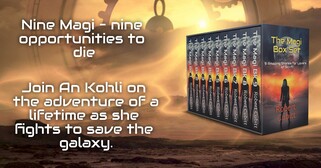 The first tip we have is to make sure your book’s cover is eye catching. Your cover image is going to appear as one of many, so it has to stand out. If it isn’t eye catching, put it onto a background that is eye catching. Graphics packages such as BookBrush and Canva have tools that allow you to do that. It does no harm to surround the cover image with short text phrases, to entice the reader in. We’ve put one of ours here to show what we mean. Pinterest also allows you to overlay text onto your images. Second tip: Make sure the filename for your cover image actually describes the image. Many graphics packages download images with filenames that are just bunches of numbers and letters and authors often don’t rename the files. But if you rename them so that it describes the image, the description acts as keywords, so they show up in search results. For example, we use the format “Author Name_Book Title_Genre_Book” Not only will those words be found by searches on Pinterest, but Google will find them too if someone does an image search using any of those terms. I always include the word “book” in all relevant file names, because that will show up in all searches where “book” is used as a search term, even if none of the other words are used. 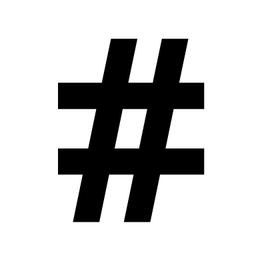 Third tip: Use the right tags for your books. Pinterest doesn’t allow you to create your own tags for your books, but it has lists of tags that have been used in a lot of searches. If you start to type a word into the tags bar, you will get a box that contains all the tags related to that word. Scroll down and select the tag you want and click on it and it will be added to your pin. It guarantees that your pin will be found if that tag is used in a search. Use as many tags as you can – but make sure they are relevant. Your book showing up in a search related to pea soup is not going to win you any friends or sell you any books (unless you write recipe books, of course). 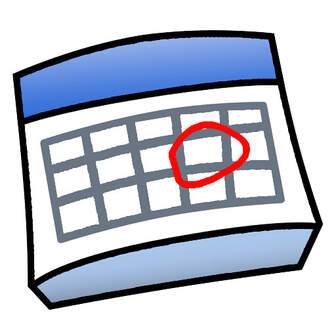 Fourth tip, post regularly and vary your post images and text. As we have said in previous blogs, it can take up to seven viewings of a product before some people will buy it, but at the same time Pinterest has rules about posting spam, so if the images and text are always the same you could get into trouble. This is where packages such as Canva and BookBrush come in handy because they have lots of templates you can use to create different images with different text, all of which will have your book cover at the forefront. Fifth Tip, make sure you are using the right keywords in your pins. Like any other search engine, Pinterest looks for pins that contain the words that users input into the search bar. So, you have to use the same keywords. You can also nudge the search in the right direction by including hastags in the pin’s description (but put them after the main text). Do your research by entering the keywords you think are right to see what sort of results you get. Refine them until you are getting results that display books just like yours. Those are then the keywords you need to use in your pins to get your books found.  Finally, don’t forget to make special pins for special events: Christmas, Valentines Day, Halloween, Black Friday, Cyber Monday etc. These are great times to boost your sales, especially of paperbacks, and special pins will attract people who are looking for anything related to those occasions. So, that is our quick whizz around Pinterest, and we hope you have the same success with it as we have. But remember, this is just one string for your marketing bow. A well rounded marketing strategy uses all available and relevant channels and also uses them in multiple different ways. If you want to give Pinterest a try, then beginners can watch this video Once you are happy with using the platform, you might want to take a look at this video, which is aimed at optimising pins for business use. If you have enjoyed this blog, or found it informative, then make sure you don’t miss future editions. Just click on the button below to sign up for our newsletter. We’ll even send you a free ebook for doing so. |
AuthorThis blog is compiled and curated by the Selfishgenie publishing team. Archives
June 2025
|
 RSS Feed
RSS Feed